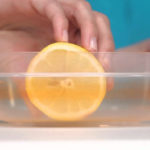1 Do You Need to Gut Mud Skippers Before Cooking?

Do you know where mud skippers live? They are usually found burrowing in the mud and digging holes to hide in the riverbanks of the Mekong Delta. Mud skippers are omnivorous with short intestines, and their diet can include small shrimp, worms, and plankton.
Given their living and feeding habits, mud skippers can be considered unclean due to their muddy habitat. Therefore, it is necessary to clean (specifically gut) the mud skippers before preparing delicious dishes.
2 Simple Mud Skipper Cleaning Method

Step 1: Soak the fish in a bucket of clean water mixed with a little salt for about 10 minutes. Then, scrape off the slime and cut off the fins (do not scale the fish). You can clean the slime off the mud skipper by using hot water, fresh banana leaves, ash, or soaking them in ice-cold water. These methods help remove the slippery coating from the fish.
Step 2: Make a small incision in the belly of the fish to remove the stomach and intestines. Rinse thoroughly with water, and your mud skipper is ready to be cooked into your desired dish!
Note: Do not cook the fish whole. Due to their uncertain diet and habitat, it is crucial to clean them thoroughly before cooking.
Choose from a variety of products at Bach Hoa Xanh:
3 Why Do Hot Pot Restaurants Cook Mud Skippers Whole?

Many people wonder about this practice. Eating the guts of mud skippers can be harmful to our health, so why do hot pot restaurants serve them whole?
The reason is that these restaurants may have purchased the mud skippers 1-2 days in advance. They regularly change the water and do not feed the fish, allowing them to digest and expel any remnants from their intestines. This process cleanses the fish’s gut, reduces the slime, and makes it safe to consume the stomach and intestines without gutting the fish.
4 Tips for Choosing Delicious Mud Skippers

When selecting mud skippers for cooking, choose live fish with smooth, evenly sized bodies and white bellies. With these simple guidelines, you’ll be able to enjoy delicious and fatty mud skippers.
Now you know whether you need to gut mud skippers before cooking. We hope this information has provided you with valuable insights, ensuring that your dish is not only tasty but also clean and nutritious.






































